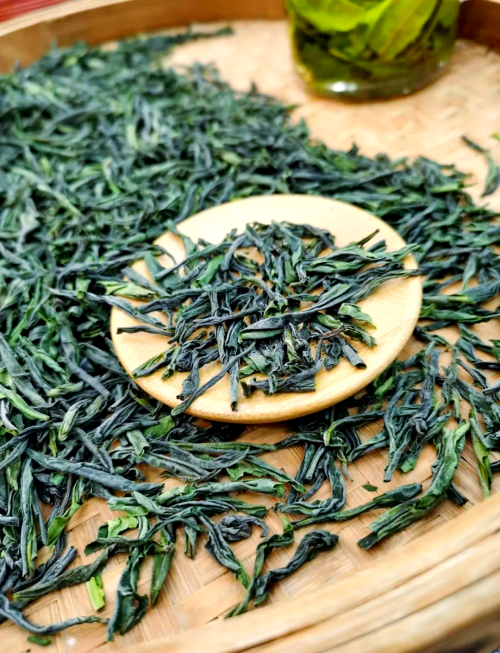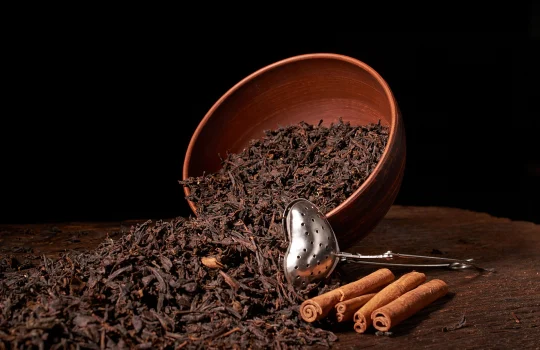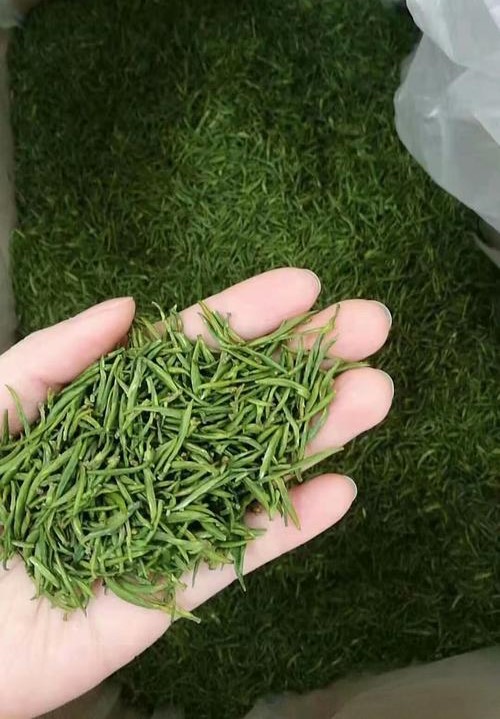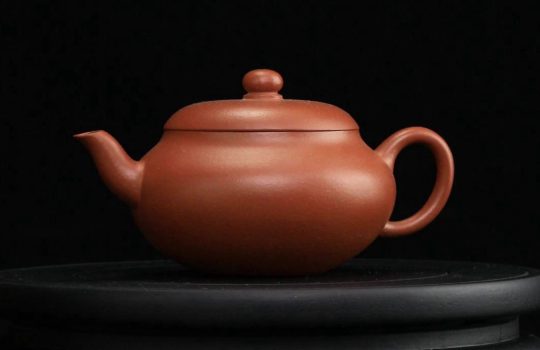Lu’an Guapian Origin: Lu’an, Jinzaizhai, Huoshan, and other areas in Anhui Province.
Quality Characteristics: Dry tea: Single leaf shaped like a melon seed, flat and uniform.
Tea liquor colour: Bright apricot yellow, clear and bright.
Aroma: Strong, fresh, and fragrant, with a hint of roasted chestnut aroma.
Taste: Mellow and sweet.
Leaf base: Tender yellow, neat and intact.
Detailed Introduction to Lu’an Guapian
Lu’an Guapian is a specialty green tea and a nationally recognised historical tea. ‘Lu’an Guapian’ has a rich historical heritage and cultural significance, with references to ‘Lu Zhou Lu’an (tea)’ as early as the Tang Dynasty in ‘The Classic of Tea.’ The harvesting of ‘Lu’an Guapian’ is unique. Tea farmers pick the tender shoots and robust leaves from the tea branches, resulting in leaves with a thick, meaty texture and optimal nutrition. It is the only green tea in China that is processed without stems or buds. Additionally, due to its different production regions, each variety has its own distinct characteristics. In a normal temperature year, new Liu’an Guapian tea is typically produced within ten days before the Grain Rain solar term, while tea with truly nutrient-rich leaves should be harvested around the Grain Rain solar term.
The taste of Liu’an Guapian
Guapian buds and leaves are tender and delicate, not suitable for prolonged steeping, but they have a fresh, crisp, and rich aroma. When tasting the tea soup, it is best to sip it slowly and swallow it gradually, allowing the delicate aroma of the young tea to permeate the senses. The physical characteristics of Liu’an Guapian
Liu’an Guapian has a flat appearance, with each tea leaf free of buds and stems, resembling a melon seed in shape. It has a tender green colour with a lustrous sheen, slightly overlapping at the top, and a clear, emerald-green tea liquor. When tasted, it has a fresh and high aroma and a sweet aftertaste. Counterfeit Liu’an Guapian, however, has a bitter taste and a yellowish colour. Counterfeit Guapian is not common, but the quality varies. Specific identification criteria are as follows: Colour: A bright green with a frosty sheen is preferable. A dull or yellowish colour indicates inferior quality or improper storage. Shape: Uniform size, flat, and tightly rolled leaves are of superior quality. Loose leaves indicate inferior quality.
Storage of Lu’an Guapian
The storage of Liu’an Guapian requires a dry, sealed, and light-proof environment, free from odours, and should not be compressed. The temperature should be between 0-20°C. Currently, galvanised iron tea barrels are commonly used for packaging, with each barrel holding approximately 25 kilograms of dry tea. Old-fire tea
After roasting, the tea is immediately packed into barrels while hot and sealed with tin solder.
The benefits of Liu’an Guapian
Prevents tooth decay and freshens breath: Lu’an Guapian contains fluoride, and its catechins can inhibit the growth of cariogenic bacteria, reducing the occurrence of dental plaque and periodontitis. The tannic acid in tea has antibacterial properties, preventing food debris from breeding bacteria, thus
effectively preventing bad breath. Lowering blood lipids: The catechins in Lu’an Guapian can reduce the levels of total cholesterol, free cholesterol, low-density lipoprotein cholesterol, and triglycerides in plasma, while increasing high-density lipoprotein cholesterol. It also has the effect of inhibiting platelet aggregation and reducing the incidence of atherosclerosis. Improving indigestion: Liu’an Guapian can help improve indigestion, such as acute diarrhoea caused by bacteria. Drinking Liu’an Guapian can alleviate symptoms.
Brewing techniques for Liu’an Guapian
Liu’an Guapian tea is not suitable for multiple infusions, so it is typically brewed twice. First, use a small amount of water at around 80°C to rinse the leaves. Since spring tea leaves are tender, using boiling water at 100°C would damage the leaves, turn the tea liquor yellow, and make the taste bitter and astringent. ‘Shaking the aroma’ allows the tea leaves to fully release their fragrance and dissolve their internal components into the tea liquor.
The Historical Origins of Liu’an Guapian
It is said that around 1905, a tea taster from a tea shop in Liu’an Prefecture selected only the tender leaves from the high-quality green tea he had purchased, discarding the older leaves and tea stems, and sold them as a new product, achieving a good price. Tea merchants in Mabu followed suit, hiring local women to replicate the process. They named it ‘Fengchi,’ meaning the ‘wings’ of “Maofeng” (bee). This also inspired another local tea merchant, who directly removed the stems from the fresh leaves and separately processed the young and mature leaves, achieving twice the result with half the effort. The finished tea surpassed ‘Fengchi’ in colour, aroma, and shape. As a result, surrounding tea farmers began to emulate this method. Tea farmers from the nearby Qitou Mountain were quick to adopt it. This tea, resembling sunflower seeds in shape, was named ‘Gua Zi Pian’ (Sunflower Seed Flakes), and later shortened to ‘Gua Pian’ for ease of pronunciation.




